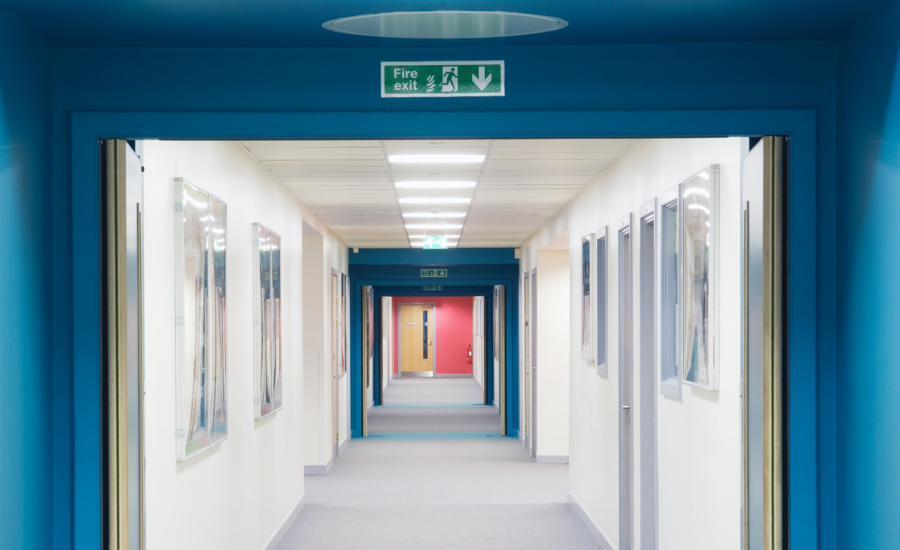Sponsored Content
Fire doors and egress remain key to building safety amidst COVID-19

As businesses continue to take action to slow the spread of COVID-19, many building managers have adjusted entries and lobbies to adhere to new restrictions and mandates, including requiring such practices as staggered entry, mask deployments and temperature checks. These important and practical measures must also take into account maintaining free and unobstructed egress for workers, customers or anyone using these buildings.
One foundation of any life safety plan for buildings is making sure all egress points are clear, well-marked and accessible to all.

Another bedrock principle of fire safety is the use of fire doors inside structures that close securely due to the heat generated from a fire. Functioning properly, these doors close automatically to cut off oxygen from a fire, stopping it from spreading throughout the building.
In an attempt to reduce the spread of the COVID-19 infection, some facilities have begun the improper practice of propping fire doors open to avoid people having to touch doors to open them.
While well-intentioned to slow the spread of COVID-19, this practice forfeits the life-saving element of fire containment in a building.
NFPA life safety codes, especially NFPA 80, govern the installation, inspection, testing and maintenance of fire doors requiring that fire doors be kept closed and latched or arranged to be automatically closed during the time of a fire.
Following are a few tips to consider:
- Blocking or wedging doors in the open position, taping the latch or using kick-down door stops to override the closing device are strictly prohibited because these practices cancel out the closing feature of the door in the event of a fire emergency.
- Fire doors are considered passive fire protection that help contain a fire and stop it from spreading. Passive fire protection must remain active to help save the lives of building occupants as well as first responders.
- The codes and standards developed by NFPA, the global leader in fire, life safety and electrical safety, are proven requirements aimed at helping protect the nation’s people and properties from the risk of fire.
- Instead of propping doors and opening your building to increased fire risk, utilize guidelines established by the U.S. Centers for Disease Control and Prevention for cleaning and disinfecting community facilities to minimize the spread of illness.
Taken together, these combined standards and best practices are proven methods to help keep our people, businesses and communities healthy and safe from the existing and evolving risks we face.
Looking for a reprint of this article?
From high-res PDFs to custom plaques, order your copy today!


